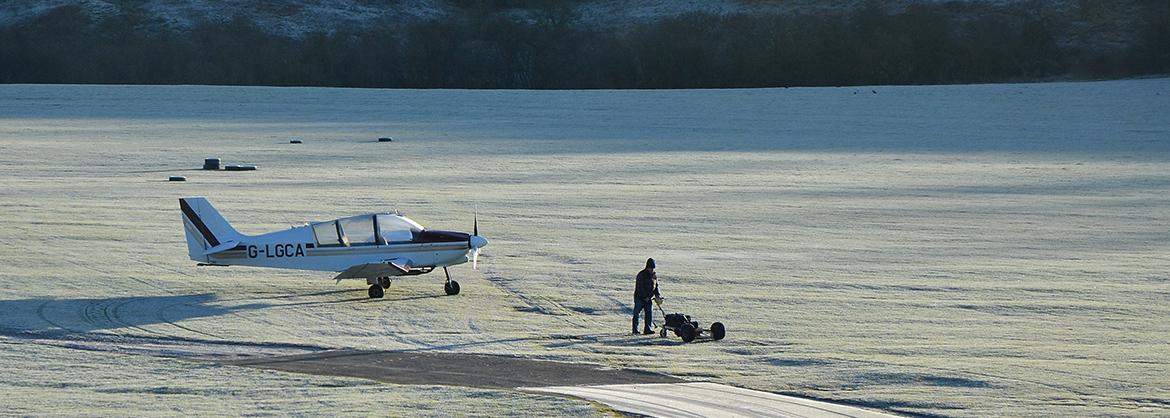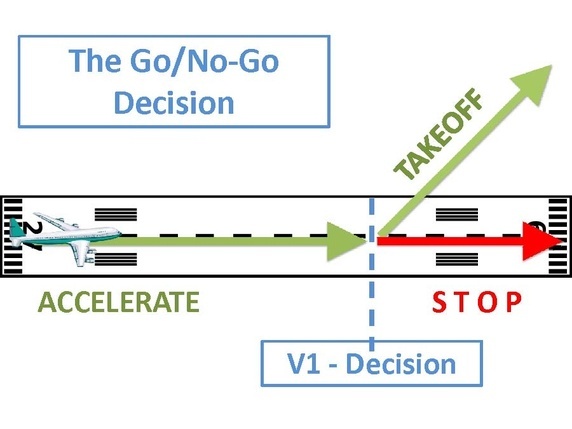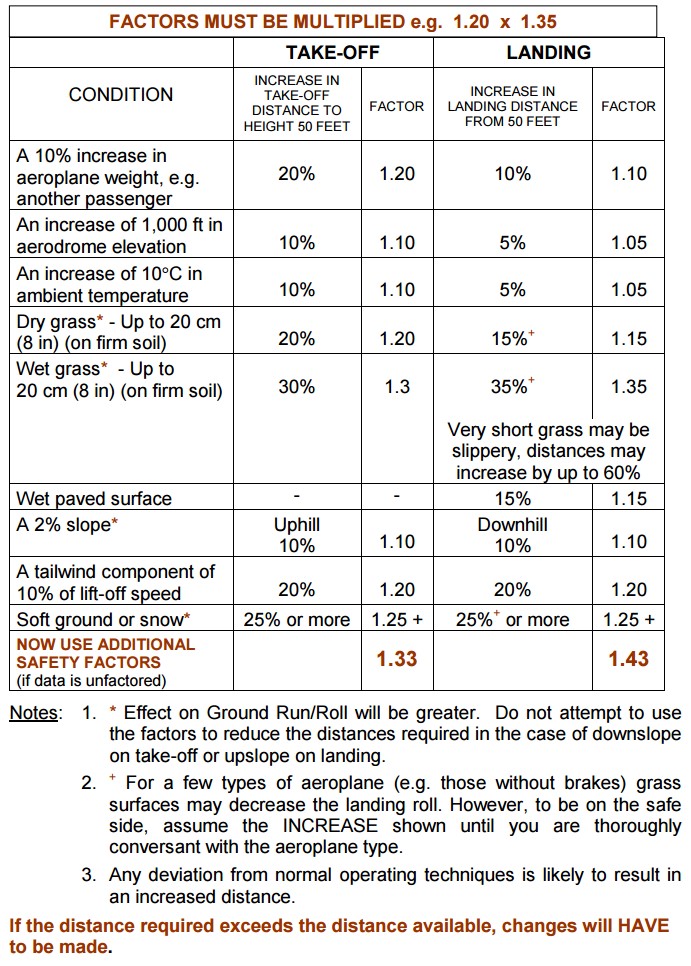Tug Pilot Information on Tug Performance
Take-off performance is a complex subject. This section outlines some of the issues to consider both in general and specifically at Dunstable. An attempt will be made to simplify some of the calculations and apply it to aero-tow operations at Dunstable. The launch point sections, NE run and SW run when East run winch launching both talk about decision points, so represent the most critical take-off scenarios we find at Dunstable.
 Let’s look at the factors that will affect take-off performance.
Let’s look at the factors that will affect take-off performance.
- Aircraft state – How well is the aircraft performing? Our main reference is the rpm at full power, all aircraft are slightly different, but we would expect to see 2400 to 2600 rpm. There is only one way to validate the check and that is to know what rpm to expect for each aircraft. Then any reduction will alert us to a potential problem, some examples might be that the ‘carb heat’ has been left out, the magnetos are not on ‘both’, or it may be early signs of a cracked cylinder.
- Aircraft weight – The heavier the aircraft the worse is the performance. An aircraft full of fuel or with two pilots on board will take a longer ground run and achieve a lower climb rate.
- Airfield elevation – The higher the elevation, the worse is the performance. A setting of 1013 would be used for these calculations. Put simply, if you are in a low pressure area, the aircraft will perform less well than high pressure.
- Airfield Temperature – Aircraft and engines perform better in cold, denser air. A hot summer’s day will reduce take-off and climb performance quite noticeably. If it’s humid the reduction will be even greater.
- Wind – It’s fairly obvious a strong headwind will improve take-off performance and even a slight tailwind will have a large negative effect on performance.
- Turbulence and windshear – Our local terrain clearly creates performance problems in all but light wind situations.
- Slope – Our airfield is all but flat and most take-offs will involve a gradient of some kind. Clearly an upslope will extend the ground run dramatically compared the short ground run on a downhill take-off. Some extra data on this follows.
- Surface – Short dry grass will give the best ground run performance, though it is worth noting that it is noticeably longer than a tarmac surface. Wet grass, long grass, soft ground or snow increase rolling resistance and therefore the take-off ground run. On soft ground, a heavy aircraft may ‘dig in’ and never reach take-off speed.
- Pilot technique – Keeping the weight off the nosewheel, or getting the tail up on a tail-wheel aircraft, and an early lift-off will reduce some surface problems.
- Rain, mud, insects, ice – All will reduce the aircraft’s aerodynamic qualities extending the ground run and reducing climb performance. Propellers are particularly affected by contamination, a bug covered propeller will reduce the potential thrust dramatically.
- Propeller state – In addition to bugs as above, chips, dents and scratches will all degrade the propeller’s thrust. See further notes under Propeller Considerations.
- Aircraft Spats – It is worth noting we operate our aircraft without wheel spats. This prevents the build of of mud and grass within them. However, all Take-off Performance and Climb graphs assume they are fitted. From the AFM it advises that take-off distance increases by 3%, climb rate is 3% lower and level flight cruise is 6% less.
- Glider – Towing a glider has a massive effect on take-off and climb performance. Stating the obvious perhaps as that is our business. The manner in which the glider is flown can have major effects on the overall take-off and climb performance. A glider delaying take-off will increase the take-off run of the whole combination. A glider towing with slip or skid will reduce the rate of climb. A glider ‘boxing’ the tug will typically half the rate of climb and many other scenarios.
Fortunately our fleet of Robin aircraft are powerful enough to provide a glider launch in most conditions found at Dunstable. There are some exceptions, the NE run operation being the main one.
NE run performance
From the start of a typical NE run aero-tow there is 280m of upslope equating to 2.2% that alone will almost double the take-off distance compared to a level surface. Add to that a wet surface or long grass or both and the run might be unsuitable for launching. A decision point must be considered by the tug pilot.
Decision Point
On the NE run it is essential to establish a Decision Point, call it a ‘Go or No Go’ decision if you like. This point will be just past the windsock when a decision to abort would allow space for both tug and glider to stop in what remains of the airfield. At the decision point you must be confident that the combination is, or is about to get, airborne and safely fly over the airfield boundary. If the decision to abort is made, release the glider, and either continue to fly away without the drag of the glider OR cut the throttle and stop the tug on the available ground.

SW run from the hill side
This is sometimes chosen as an option with a SE wind. The position benefits from an initial steep downslope which gives swift acceleration. Usually the launch position is sheltered from the worst of the wind which again helps with initial acceleration. The overall slope is 0%, but with the combination getting airborne early it is sometimes possible to provide aero-tows. The climb performance will be adversely affected by a negative wind gradient initially and then poor climb performance in the lee of the hill. Careful thought needs to be given to operating in these conditions.
SW run
Our main run and produces few problems. This has 0% gradient to the upslope, However, if the wind is light, the glider heavy and ground run extends onto the upslope the overall take-off run has a 1% gradient.
W run
In performance terms our best run. It is downhill in all directions, the slope towards the club entrance being -2.4%.
Take-off Obstacles
Until recent years there were no take-off obstacles in any of our take-off directions. However, the growth of trees and bushes on the new ground above the club entrance reduces the ‘take-off distance’ available by presenting an obstacle to be cleared soon after getting airborne. This mostly affects the NE run and possibly the W run. The main offending trees have been lopped in recent years, unfortunately, they continue to grow and we need to consider their impact on performance.


The CAA Safety Group have issued some broad guidelines on modifiers to take-off performance. Applicable to our operation but don’t take into account the fact we are towing a glider.

CAA Safety Sense Leaflet – ‘Aeroplane Performance’ can be seen here.
 Loading...
Loading...
Return to ‘Aircraft’ Return to ‘Front Page’

